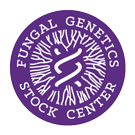Strain: Neurospora crassa
FGSC #6427
Reporting Genes: mus-25 nic-3
Species: crassa
Allele: FK123 Y31881
Alternate Strain Number: M2388
Depositor: EK
Linkage Group: VIIR L
Mating Type: a
Opposite Mating Type: 6426
Genes

Reporting Genes: mus-25 nic-3
Species: crassa
Allele: FK123 Y31881
Alternate Strain Number: M2388
Depositor: EK
Linkage Group: VIIR L
Mating Type: a
Opposite Mating Type: 6426
